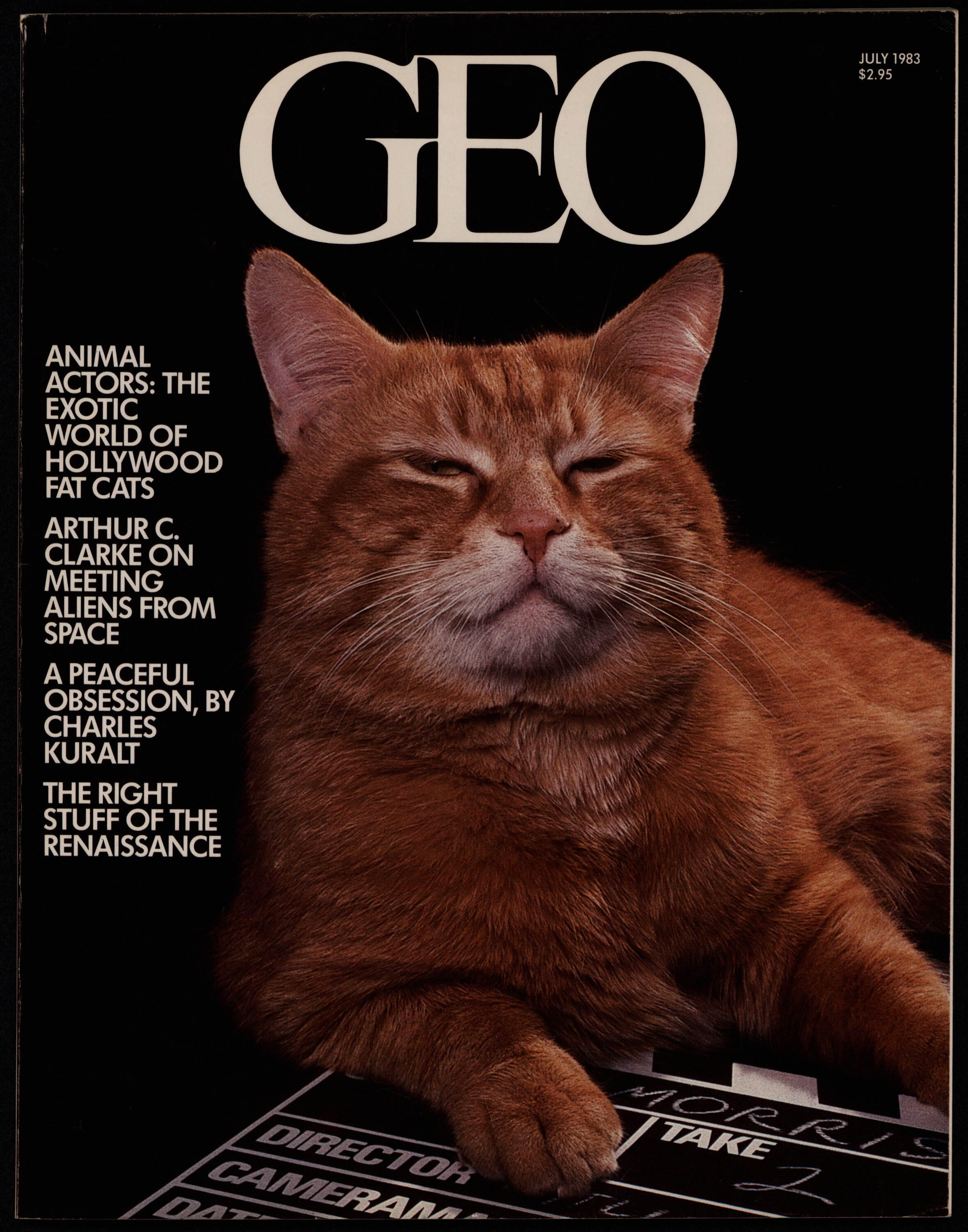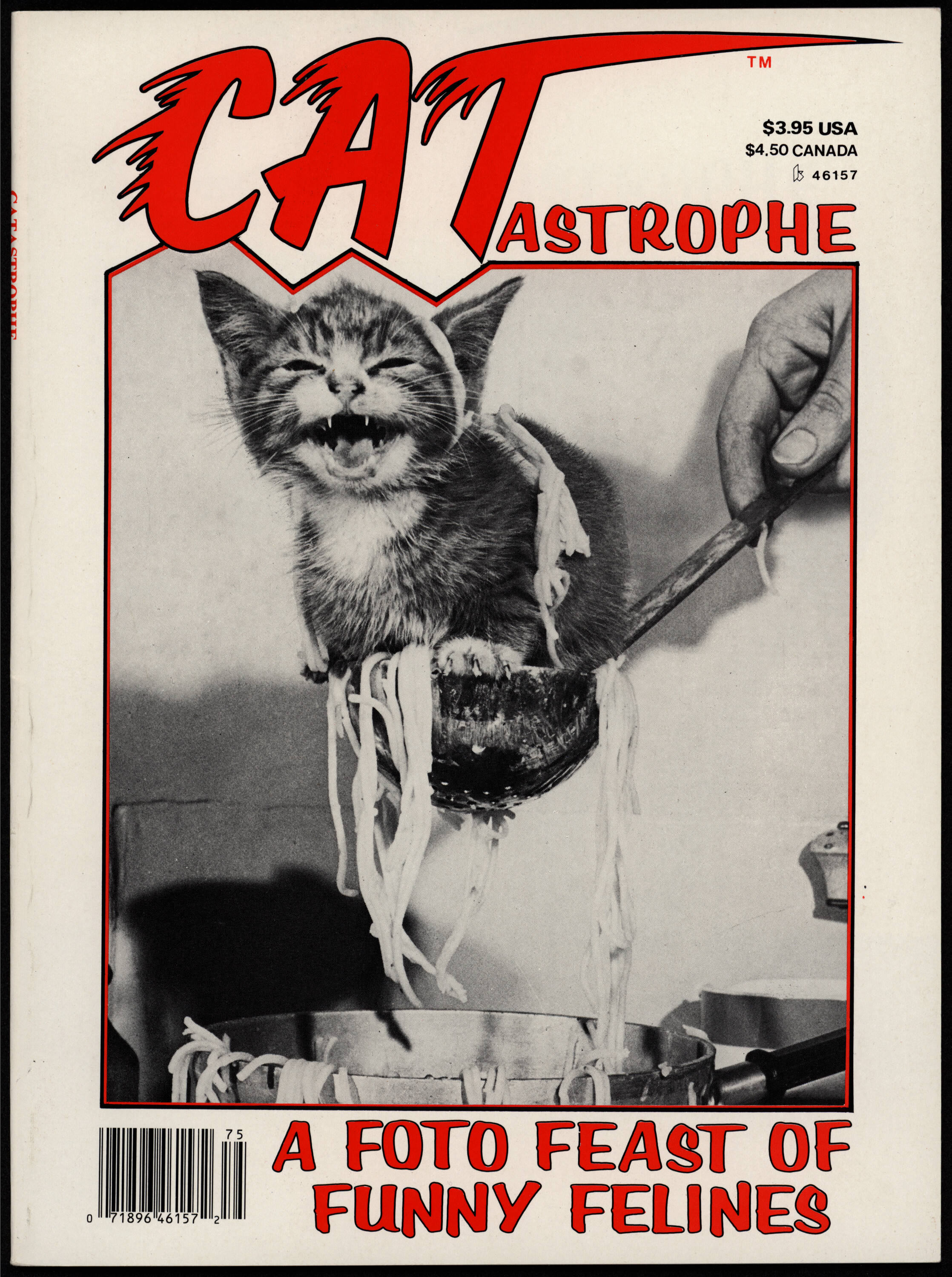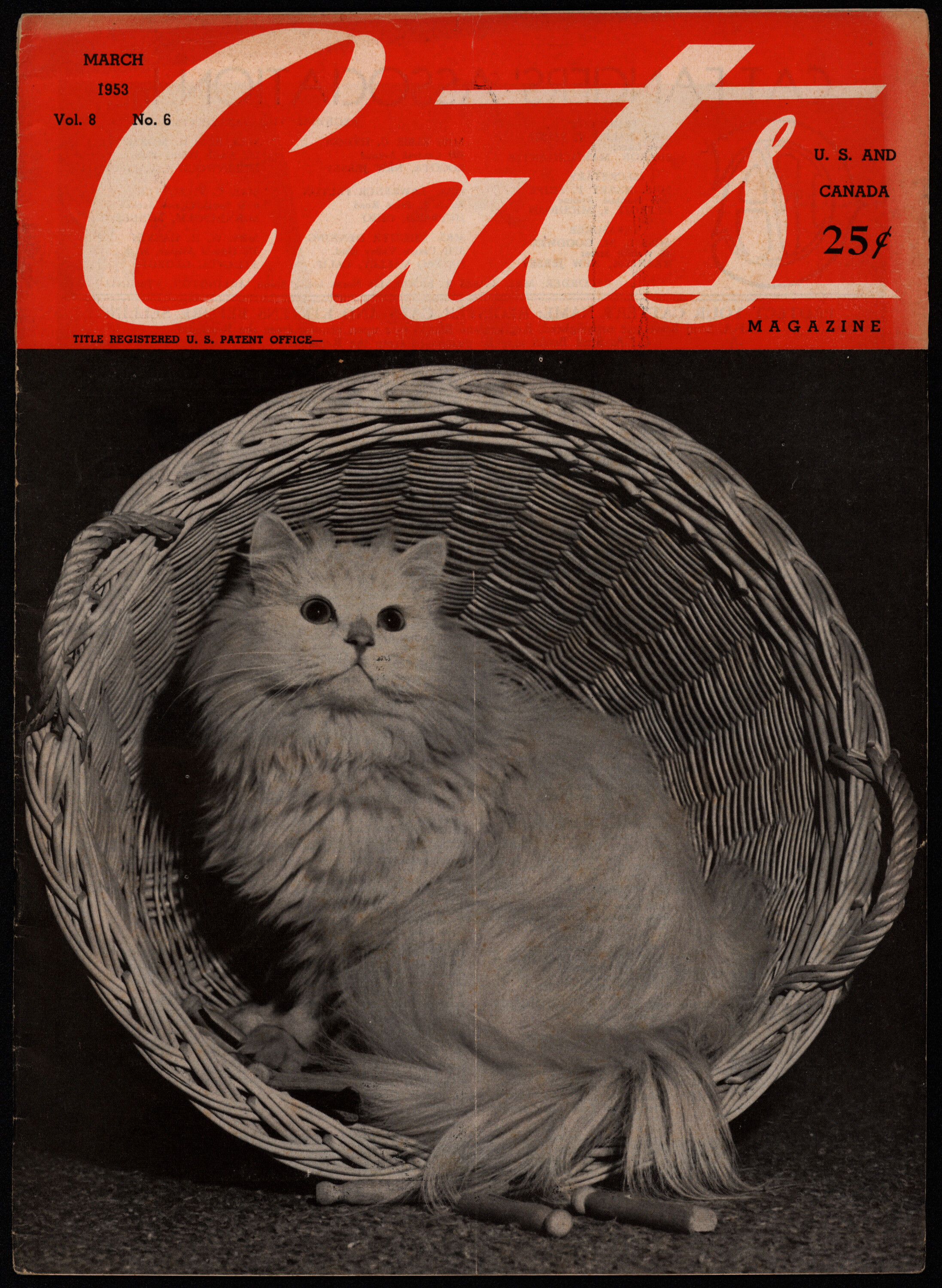Fancy Magazines for Pet Fanciers: Birds, Cats, Dogs, and Ferrets
Cats
In 2023, the World Animal Foundation reported that 46.5 million households own one or more cats, estimating over 60 million pet cats in the United States. Cats are the second most common house pet, coming in 2nd only to dogs. Though the numbers may fall on the side of dogs, it is safe to say that cats have an impressive hold over our hearts and popular culture. Cats have been a fascination and companion of humans for centuries, so it is not surprising to find many feline-related magazines in our collection.
The development of human agricultural societies in the early Neolithic Period is likely the origin of domestic cats. Early cats diverged from their wild relatives and coexisted in human communities, often catching small rodents drawn to grain and other food stockpiles. These cats were still a far cry from the furry friends we know today. In Ancient Egyptian artwork, cats are sacredly depicted due to their association with the goddess Bastet. Some tomb paintings show cats sitting beneath the chairs of their owners. In the Middle Ages, certain groups began to associate cats with witchcraft and the devil. These folktales are still prevalent in modern superstitions, such as the belief in the unlucky black cat.
It wasn’t until the nineteenth century that people commonly began to see cats and other pets as part of the family. As photography emerged, people started including beloved pets in their family photos. Two early silent films, Boxing Cats (1894) and The Sick Kitten (1903), prominently featured cats. Garfield or Tom of Tom and Jerry are just two of the numerous fictional cats seen in popular media.
Geo magazine describes itself as a mix between National Geographic and Life. It was first published in France and Germany in 1976. As the magazine gained popularity, publishers began issuing new versions in various countries. The magazine ran in the United States from 1979 to February 1985. It featured lavish, full-color photos on high-quality paper, making the magazine expensive to produce. In 1984, issues of Geo sold for $2.95. At the time it ceased publication, a company official said that to continue printing, the magazine would need to double it’s circulation.
This 1983 issue features Morris the Cat, the face of 9lives brand cat food. The original Morris passed away in 1978; The character was subsequently replaced with a variety of orange tabby cats, all adopted from animal shelters or rescues. The character starred in 58 commercials for the brand, which featured Morris’s inner dialog told through voiceover. In 1973, the original Morris starred in the film Shamus alongside Burt Reynolds. Morris became a symbol of a national cat rescue adoption campaign and even held mock presidential campaigns in 1988, 1992, and 2012.
Known for his finicky taste and dry sense of humor, Morris’s appearances in 9lives commercials predate the Garfield comic strip. The character’s impact on marketing and advertising is still seen today.
If you’re a longtime internet user, you likely know the prevalence of funny cat videos and photos in online culture. Magazines like the 1986 CATastrophe could be considered the pre-internet version of the funny cat video. In this premiere edition, editor Russell Weiner says “The world would be a much darker, drearier place” without cats. The magazine displays a collection of humorous and heartwarming pictures. The magazine was likely published to promote other cat merchandise, such as greeting cards and posters. There was never a second issue. CATastrophe's publisher, Condor Books Inc., seems to have published a series of superhero comic books, though there is little information on the company.
The term “cat fancy” typically refers to a subculture of cat owners. Fanciers consider themselves connoisseurs of the pet, with a particular focus on breed and aesthetics. The Cat Fanciers’ Association (CFA), established in 1906, is a not-for-profit organization known as the world’s largest registry of pedigreed cats. CFA provides services, such as licensing and judging cat shows and registering over 2 million pedigreed cats (as of 2023). In the 1940s CFA began publishing cat magazines for cat owners and lovers. Cats Magazine was not a CFA publication. It was likely created as a competitor for The Cat Gazette, the official CFA journal. First published in 1945, Cats Magazine later merged with Alice Graydon Phillips’ Our Cats. It ceased publication in 2001.
This March 1953 issue of Cats Magazine includes informative articles on cat breeding, diets, and care. Along with these articles are more humorous sections, such as the “Fewlines ’Bout Felines” page, which features short poems about cats. The magazine lists local clubs and breeders affiliated with CFA and other Cat Fancier associations. Some letters from readers are critical of CFA, with one writing that their local cat fanciers club was wrongfully expelled from the organization. Cats Magazine is one of the earliest cat-related magazines published in the United States and would serve as a competitor for future official CFA magazines.
Fancy Publications, publisher of Cat Fancy (1965-2015) and Dog Fancy (1970-2015), published a series of special issues in the 1990s. These magazines are targeted toward new pet owners and all include “U.S.A.” in their titles. This 1997 issue of Kittens U.S.A. is all about caring for kittens. It discusses various topics, including kitten health, development, adoption from rescues, naming new kittens, breeds, and even an article titled “A Day in the Life of a Kitten.”
NOTE: The original version of this exhibit stated 37 million households in the United States owned one or more pet cats. We have updated this with a more current statistic from the World Animal Foundation.



